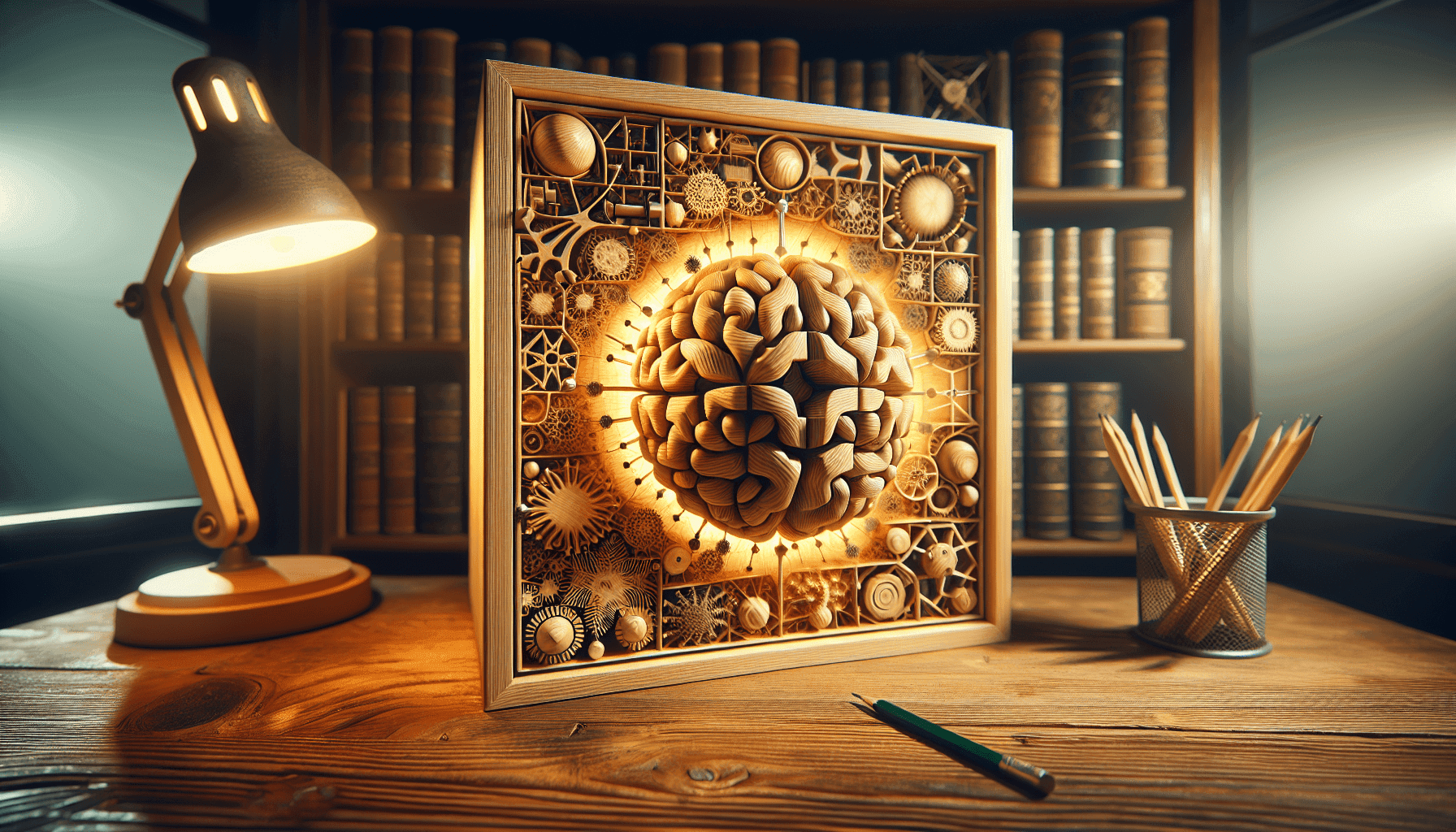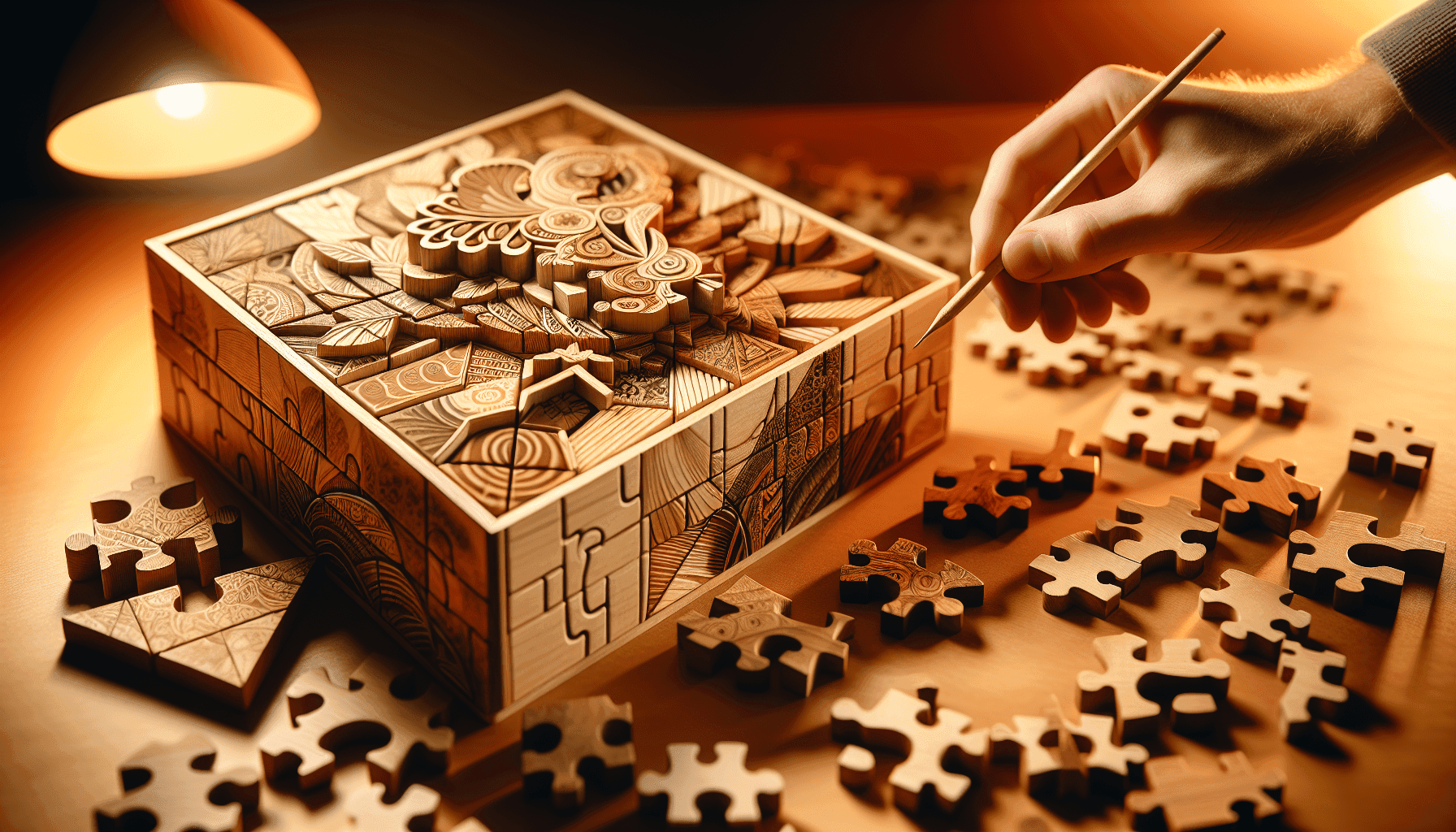Have you ever wondered how a simple toy could be a powerful tool for learning and development? In the world of educational tools, 3D wooden puzzles have emerged as a fascinating option that combines fun with cognitive growth. These delightful puzzles are more than just a pastime; they offer numerous educational benefits for people of all ages. From enhancing problem-solving skills to improving hand-eye coordination, 3D wooden puzzles are a treasure trove of educational opportunities.
Understanding 3D Wooden Puzzles
Wooden puzzles have been a part of educational practices for decades, but the 3D versions add a layer of complexity and intrigue. These puzzles are crafted from high-quality wood and are designed to be assembled into a three-dimensional structure. Unlike traditional puzzles that lay flat, 3D wooden puzzles require you to consider not only how pieces fit together but also how they stack to create a complete, intricate model.
Companies like Robotime, Rokr, Ugears, Wood Trick, EWA, Vitascope, Wooden City, and Handmadecity manufacture these engaging puzzles. Each brand brings its unique style and theme to the puzzles, offering a variety of models ranging from architectural replicas to mechanical moving parts.
Developing Problem-Solving Skills
One of the most significant educational benefits of 3D wooden puzzles is their ability to enhance problem-solving skills. As you work through the assembly process, you are constantly evaluating and adjusting your approach to fit the pieces together correctly. This hands-on activity pushes you to think strategically and plan your next steps carefully, similar to solving mathematical or logical problems.
The process of trial and error, coupled with the satisfaction of finding a solution, reinforces critical thinking. When a piece doesn’t fit as expected, you are challenged to look for alternatives, encouraging flexible thinking and mental resilience. Over time, regularly engaging with these puzzles can strengthen your ability to tackle complex problems in everyday life.
Boosting Spatial Awareness
Building a 3D wooden puzzle requires an understanding of spatial relationships. As you manipulate pieces to fit them into the overall structure, you are honing your spatial awareness—a skill essential for subjects like mathematics, engineering, and architecture. By visualizing how different pieces will come together to form a three-dimensional object, you improve your ability to mentally rotate shapes and predict spatial outcomes.
This experience is particularly beneficial for children, as they are in a critical period of developing these cognitive skills. As they interact with 3D puzzles, they gain a better understanding of concepts like symmetry, geometry, and physics, which can be beneficial in their academic subjects.
Encouraging Patience and Perseverance
Patience is a virtue, as the saying goes, and working with 3D wooden puzzles can significantly cultivate this quality. As the puzzles can be intricate and sometimes challenging, completing one requires dedication, attention to detail, and perseverance. You learn to work methodically, focusing on one aspect of the puzzle at a time.
This slow and steady approach teaches you to be patient with the process, encouraging you to persist even when the solution isn’t immediately obvious. The satisfaction derived from completing a puzzle reinforces the importance of persistence and perseverance, values that are applicable in various life situations.

Enhancing Fine Motor Skills
While focusing on the mental benefits is essential, it is equally important to acknowledge the physical skills honed by 3D wooden puzzles. Assembling these puzzles requires precise movements and coordination, thereby enhancing fine motor skills. The intricate handling of small, detailed pieces improves dexterity and hand-eye coordination, skills that are important for young children and can be beneficial for adults as well.
Table: Fine Motor Skills Benefits
| Skill | Impact |
|---|---|
| Dexterity | Improved manipulation of small objects |
| Hand-eye Coordination | Better synchronization between hands and eyes |
Stimulating Creativity and Imagination
3D wooden puzzles can serve as a fantastic platform to unleash your creativity and imagination. While following the instructions is one approach, exploring alternative ways to assemble or even modify the puzzle can spark innovative thinking. As you interpret how various components come together, you begin to visualize diverse creative outcomes beyond the suggested model.
This kind of imaginative play nurtures creativity, encouraging you to think outside the box and come up with unique solutions. As you design and create, you tap into artistic abilities that might otherwise remain underutilized.
Promoting Concentration and Focus
One common challenge in today’s fast-paced world is maintaining focus. Engaging with a 3D wooden puzzle can be a calming activity that promotes concentration. Assembling the puzzle requires sustained attention and focus, as losing track might mean starting over or retracing steps.
Immersing yourself in this type of task can help improve your attention span, encouraging mindfulness and awareness. The ability to remain concentrated on a task is invaluable, particularly in academic settings or professional environments where multitasking is common.

Supporting Social Interaction and Teamwork
Although puzzles are often thought of as solitary activities, they offer great opportunities for social interaction and teamwork. Gathering friends or family to work on a 3D puzzle together can strengthen relationships and improve teamwork skills. As you collaborate and communicate to solve the puzzle together, you learn to value different perspectives and negotiate solutions collectively.
These interactions help build team spirit and teach essential communication skills. Plus, shared accomplishments and the joy of completing the puzzle together can enhance group morale and foster a sense of community.
Improving Memory and Recall
Assembling a 3D wooden puzzle requires you to remember where pieces go and how they connect with each other, which can enhance memory and recall. This exercise in remembering sequences and spatial relationships can benefit individuals of all ages, particularly those looking to keep their cognitive faculties sharp.
Table: Memory Benefits
| Memory Type | Benefit |
|---|---|
| Short-term Memory | Improved recall of sequential steps |
| Spatial Memory | Enhanced memory of object positioning |
Encouraging Innovation in Educational Settings
In classrooms, 3D wooden puzzles can serve as an effective innovative teaching tool. Teachers can incorporate these puzzles into lessons to make learning more engaging and to offer practical applications of theoretical concepts. Integrating puzzles into curricula provides students with hands-on experience in subjects like mathematics, science, and art.
This method of learning by doing can enhance comprehension and retention of the material. Furthermore, it offers students a break from traditional learning methods, adding diversity to educational practices and catering to various learning styles.
Brand-Specific Offerings
Different brands offer unique features that can cater to various interests and educational goals:
Robotime and Rokr
These brands are renowned for their mechanical models that operate with moving parts. These puzzles offer insights into basic engineering principles and provide an excellent introduction to mechanical concepts.
Ugears and Wood Trick
Ugears and Wood Trick offer puzzles that are aesthetically engaging and complex. Their models often highlight unique artistic designs, encouraging creativity while providing an appreciation for intricate craftsmanship.
EWA and Vitascope
EWA and Vitascope puzzles focus on cinematic themes or historical models, offering educational insights into history and storytelling. Their puzzles can be particularly engaging for those with an interest in movie-making or history.
Wooden City and Handmadecity
These brands often focus on cityscapes or architectural wonders. They provide a practical way of learning architectural concepts and augment skills in geometry and spatial awareness.
Avoiding Screen Time
In a digital age where screens dominate entertainment, 3D wooden puzzles offer a refreshingly screen-free activity. They provide a wholesome alternative that can help reduce screen time, allowing for quality intellectual engagement without digital distractions. Engaging with physical puzzles stimulates your senses more fully and promotes a break from the constant influx of digital information.
Introducing Mindfulness and Relaxation
The process of assembling a 3D wooden puzzle can be meditative. It requires careful attention to one piece and step at a time, which can promote mindfulness and reduce stress. As you focus on the tactile experience, you enter a state of flow, allowing stressors of daily life to fade into the background.
Fostering Love for Life-Long Learning
3D wooden puzzles can ignite a passion for learning. Their ability to combine challenge with fun makes them an appealing choice for individuals seeking intellectual and creative stimulation. As you develop a sense of accomplishment from completing a puzzle, you cultivate a love for life-long learning and self-improvement.
Conclusion
Exploring the many educational benefits of 3D wooden puzzles reveals just how much these intricate models have to offer. From enhancing cognitive and motor skills to promoting creativity and social interaction, the advantages are numerous. Whether as an engaging educational tool in the classroom or a calming activity at home, 3D wooden puzzles provide a valuable resource for development.
By choosing a puzzle that resonates with your interests or challenges your abilities, you can gain educational benefits while enjoying a rewarding and productive pastime. As you embrace the world of 3D wooden puzzles, remember that each piece you fit into place is a step toward greater knowledge and skill.
Ready to start your 3D wooden puzzle journey? Click on any of the following links for our reviews:
All Categories | Boats | Clocks | Marble Runs | Musical Boxes | Musical Instruments | Puzzle Boxes | Trains | Trams | Trucks